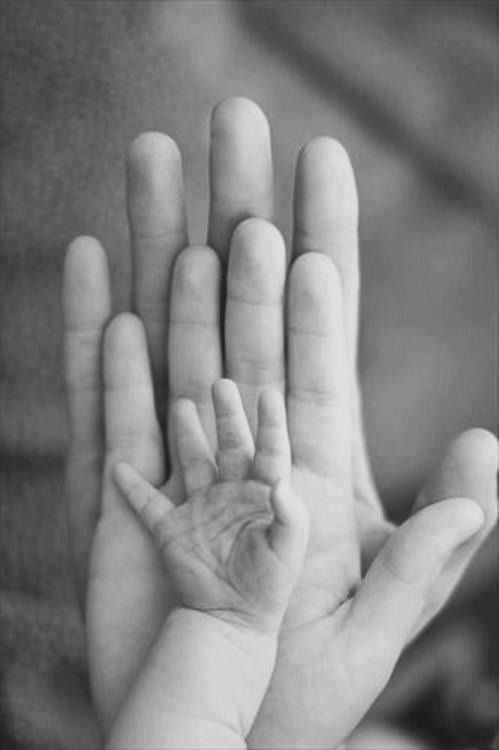Delivery
|
|
|
|
|
|
|
|
|
|
|
|
|
|
|
|
|
|
|
Labour and birth
How birth trauma can happen? Ways that babies and people can recover from it
by Christina Warmenbol
|
Birth is a very deep experience for both mother and baby that shapes their lives. For the baby, it will color his world according to the kind of experience he had during birth. Negative elements in this important event can become psychological traumas that will interfere with the normal development of the infant.
Natural elements like a very long labor, or very quick birth or the umbilical cord around the neck can bring the baby be in emotional distress and lead to trauma. But mostly through the increased use of technology in our industrialized world birth trauma is greatly enhanced. Interventions, such as induction, epidural or other anesthesia, forceps or vacuum delivery, cesarean birth, early cord cutting, circumcision and separation from the mother after birth, especially when unnecessary, have a deep psychological impact and can be traumatizing. In fact they are traumatizing if the baby is not acknowledged: when the baby is taken by surprise, not informed or acknowledged in his pain. Birth interventions can become traumatic also when perceived as a reinforcement of prenatal trauma, such as prenatal alcohol abuse by the mother. Other origins of trauma are the higher stress that pregnant mothers experience which result in a higher ratio of complications at birth but also unwanted pregnancies. The level of trauma can defer from high level (45% of babies according to W. Emerson) to moderate or mild level (50%) to very low are absent. When traumatized the baby feels overwhelmed. The stress hormones like adrenaline are present in his body during a long time after birth. The symptoms that can indicate a trauma in the baby are a higher crying time than normal (more than 20 min. per day), avoiding eye contact, resistance to being held or touched, resistance to breastfeeding, loss of vital energy, night crying and expression of feelings of anxiety or terror. Without relief, the infant grows to hate the emotional states that are within him; he will learn to rid himself of emotional states instead of welcoming such states into his sense of identity, and he will learn to make a goal of his life to rid himself of such states and avoid feelings altogether. If the baby is treated shortly after birth the trauma can be diminished substantially by simulating the birth experience and telling the birth story to the baby while keeping eye contact and empathic feedback so he feels acknowledged in his difficult experiences. But also the connection and close contact with the mother can help him ‘digest’ his difficult experience. If birth trauma is undetected in the baby, behavior in the growing child can be an indicator of eventual trauma endured during birth, like anxious, aggressive, opposing or withdrawn behavior and learning difficulties. In the adult recurring strong emotions such as anger, loneliness, fear of rejection, anxiousness and violent behavior might be brought back to traumatizing circumstances at birth. Unconsciously at the moment of trauma, an unconscious belief about oneself or the world or a decision has been taken by the baby that will reflect in their way of being. F.i. ‘The world is a scary place’, a statement that creates withdraw and fear. Or ‘I’ll have to do everything alone’ after a baby felt left alone during epidural, and will always avoid asking for help. Artwork and creative productions can be the expression – mostly unconscious – of deep emotional trauma originated in birth. Dreams and nightmares can bring trauma to consciousness. But also pathological symptoms such as suicide attempts and the way they are performed can be tracked to birth and to the way this person came into the world, f.i. if during birth chemicals where used for induction, or pain management, the suicidal attempt was in a chemical way, by an overdose of medication. There exist many possibilities for treatment of birth traumas in adults: hypnosis and regression therapy bring the client back in a deep alpha state and reprogram the negative experiences and beliefs. The unconscious structure of recapitulation is uncovered: recurring situations or behavior that reinforce or avoid the traumatic experience during life. The more somatic path of treatment can be osteopathy, cranio-sacral balancing, therapies such as EMDR [Eye Movement Desensitization and Reprocessing], EFT [Emotional Freedom Technique], and AIT [Advanced Integrative Therapy] are particularly powerful. A very effective healing is a therapy that heals from the deepest source which is the soul and which brings a higher viewpoint of the soul and healing power to the traumatic emotional event, which is elaborated in Therapy of Intra-Uterine Life, founded by Dr. Claude Imbert. More information and consciousness about the deep effects of birth trauma on later development and psychological health are very necessary for both future parents and birth professionals so that unnecessary suffering can be avoided in the future and babies can start their lives in a free way! |


